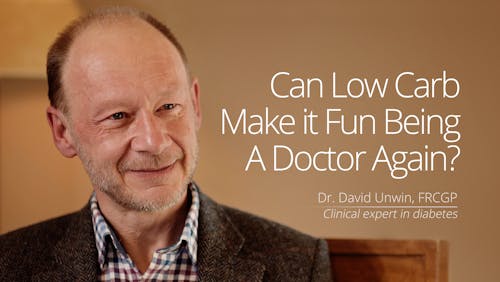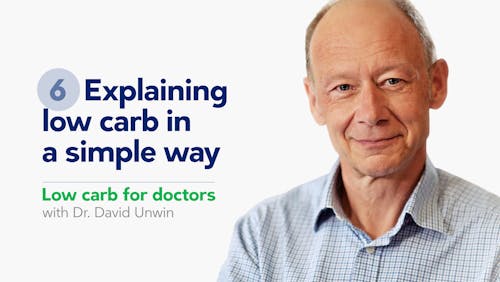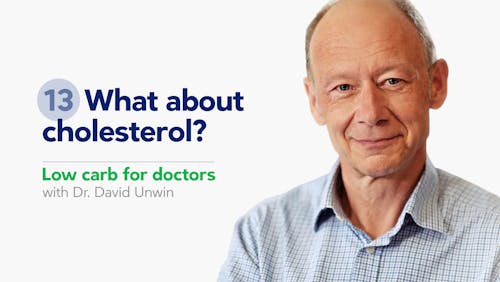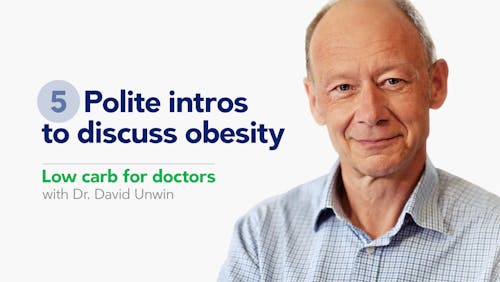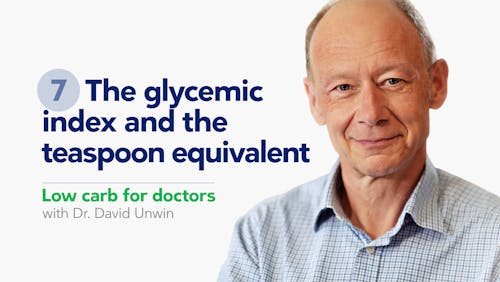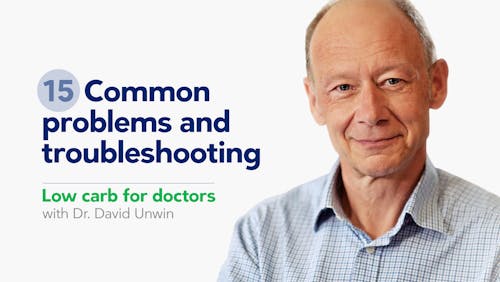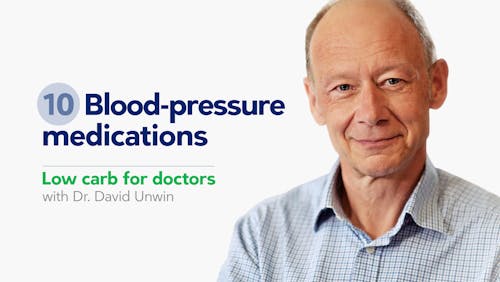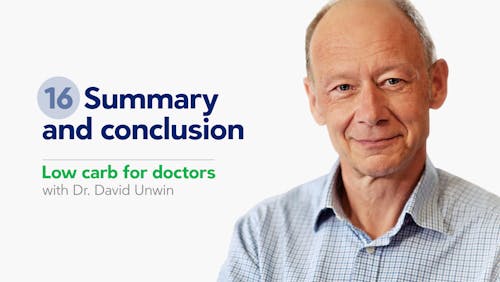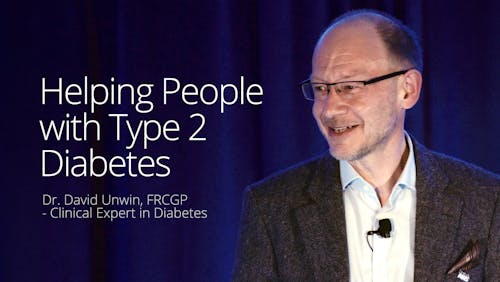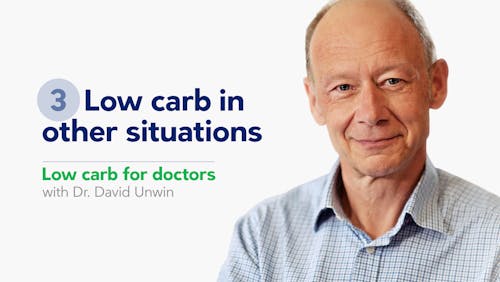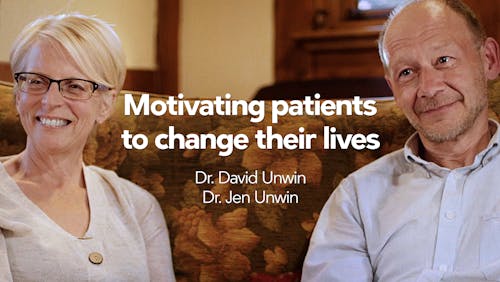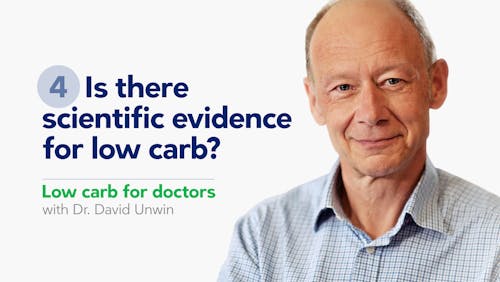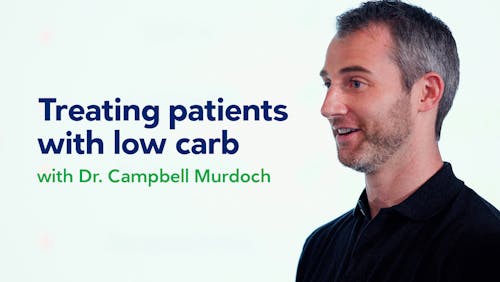Petition calls for the return of Dr. David Unwin’s sugar infographics

Have you seen the petition to the UK National Institute for Health and Care Excellence (NICE), asking its decision-makers to reinstate Dr. David Unwin’s sugar infographics?
At Diet Doctor, we have a lot of respect for Dr. Unwin, MD. He is a member of our medical review board and hosts a video series for clinicians, explaining the practical use of low-carb diets in a family practice setting. We have also featured him on our Diet Doctor Podcast.
Why are we such big supporters of his? For starters, his mission aligns with ours. Like at Diet Doctor, Dr. Unwin aims to help individuals dramatically improve their health with easy-to-understand information about nutrition.
And this mission is consistent with the purpose behind Dr. Unwin’s infographics. If you haven’t seen them, they use the glycemic index to graphically display the equivalent amount of sugar per teaspoon in common foods like spaghetti, bananas, and sugary cereals.
Patients routinely comment on how easily digestible the information is when presented in this way. The reason these graphics are so easily understandable stems from the fact that the everyday person often doesn’t react when talking about a glycemic index of 72 or 75. By contrast, if we show them a teaspoon of sugar, most better understand the significance.
That’s part of what makes Dr. Unwin’s graphics so powerful.
For people whose bodies have difficulty processing dietary carbohydrates, a visual describing how around 1 cup of cornflakes breaks down into roughly the equivalent of 8.4 teaspoons of sugar is sobering. Or, understanding that about a ⅔ cup of oat porridge breaks down into the equivalent of 4.4 teaspoons of sugar may help people rethink their breakfast choices.
But like many attempts to simplify things for better understanding, Dr. Unwin’s charts aren’t perfect. This is largely due to the fact that the glycemic index itself is not a perfect measure of how foods affect an individual’s blood sugar levels.
Some researchers have pointed out that there is a wide variation between individuals when the glycemic index value of a food is measured. In fact, even the same individual tested on different days can respond very differently. This is why the glycemic index is based on a very large number of test subjects.
Also, many other factors, such as the ripeness of fruit, can alter a food’s effect on blood sugar, another reason large numbers of tests are done to determine the glycemic index.
Additionally, depending on the “food vehicle” that transports the sugar in a certain kind of food, how fast blood sugar becomes elevated also differs. For example, oat porridge may cause a slower, less steep rise in blood sugar compared to 4.4 teaspoons of pure sugar.
But, for people with diabetes, the overall amount of sugar in certain foods matters. For them, it’s not only about how fast a specific food causes blood sugar to go up.
As other researchers have pointed out, the glycemic index of a particular food may not show how long that food can elevate blood sugar, especially in people with diabetes. Instead, the total amount of sugar matters when a patient’s body is struggling to process dietary glucose.
The flaws in using the glycemic index as a basis for these charts were pointed out in a recent article published in The Mail on Sunday. Journalist Barney Calman questioned the validity of the charts, citing a series of “eating challenges,” which showed how the rises in blood sugar for two individuals were lower when consuming specific foods — rather than simply eating their sugar equivalents.
As a result, Calman questioned whether NICE should be using the graphics, and NICE officials subsequently removed them from their resource library.
On one hand, Calman is absolutely correct. For many people, the blood sugar response to the food vs the sugar equivalent will not be exactly the same. A banana is nutritionally different from sugar. After all, a banana contains important nutrients, while sugar does not. But is this the point we should be making?
After all, the aim of Dr. Unwin’s graphics is to simplify a complex process and make it understandable to the everyday person. They were meant to help explain complicated topics like glycemic index, glycemic load, and carbohydrate content to patients with a specific diagnosed condition.
Dr. Unwin created an efficient and understandable way to communicate with the patients he sees in his office who are asking for his assistance. That is not the same as developing a public health message that applies to all individuals.
Young or active individuals without metabolic disease will react differently to oatmeal, whole-grain bread, and fruit when compared to those who are obese, have insulin resistance, and are fairly sedentary. That is too complex an array of reactions to show in a simple graphic.
Until we can come up with simple-to-understand graphics that include individual variation, Dr. Unwin’s graphics are among the best and make it easy to visualize how even so-called “healthy foods” convert to sugar.
How our bodies then handle consuming these foods from a blood-sugar perspective is the next step.
Thanks for reading,
Bret Scher, MD FACC
More posts
New study: Heart attack prevention in young and middle-aged people
TMAO is back in the news, but it still means little for our health


